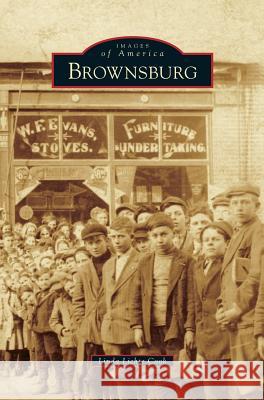Brownsburg » książka
Brownsburg
ISBN-13: 9781531671358 / Angielski / Twarda / 2015 / 130 str.
In 1835, William Harris sectioned off his land--the area now known as Main and Green Streets in Brownsburg--for the purpose of establishing a town. Harris used beech trees, elm trees, and hickory stumps to define the town's boundaries; he called it Harrisburg. The name Harrisburg was already in use elsewhere in Indiana, so Brownsburg, which paid homage to early settler James B. Brown, was selected as an alternative. Brownsburg's railroad station, located between Indianapolis and Crawfordsville, positioned the farming community for dramatic growth. As new settlers arrived, new businesses, mills, and factories also began to open. Today, Brownsburg continues to grow, and the community is known for its engineering and racing industries and its first-rate schools.
In 1835, William Harris sectioned off his land--the area now known as Main and Green Streets in Brownsburg--for the purpose of establishing a town. Harris used beech trees, elm trees, and hickory stumps to define the towns boundaries; he called it Harrisburg. The name Harrisburg was already in use elsewhere in Indiana, so Brownsburg, which paid homage to early settler James B. Brown, was selected as an alternative. Brownsburgs railroad station, located between Indianapolis and Crawfordsville, positioned the farming community for dramatic growth. As new settlers arrived, new businesses, mills, and factories also began to open. Today, Brownsburg continues to grow, and the community is known for its engineering and racing industries and its first-rate schools.











